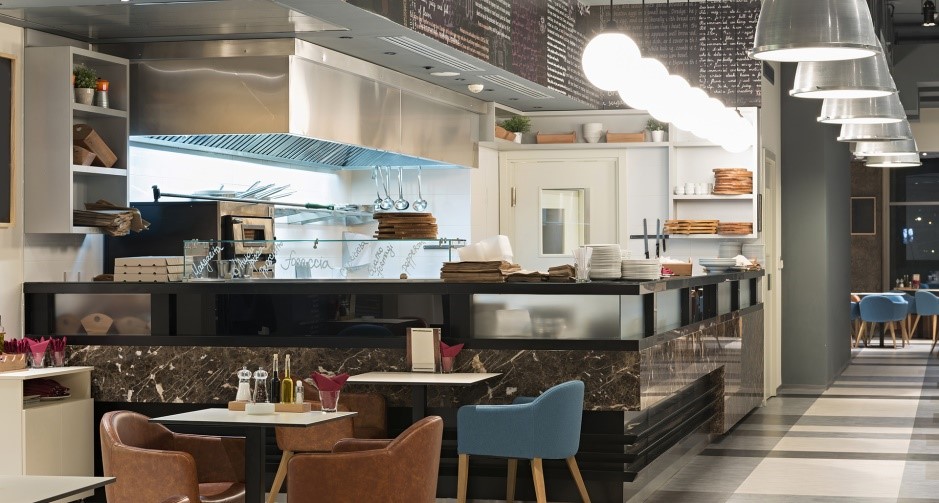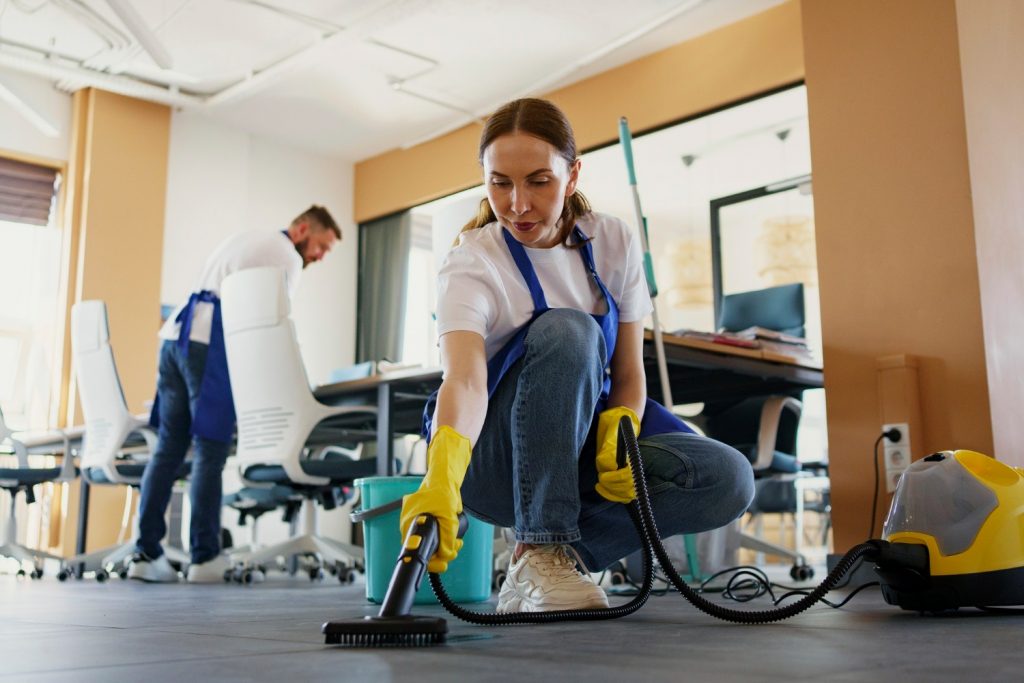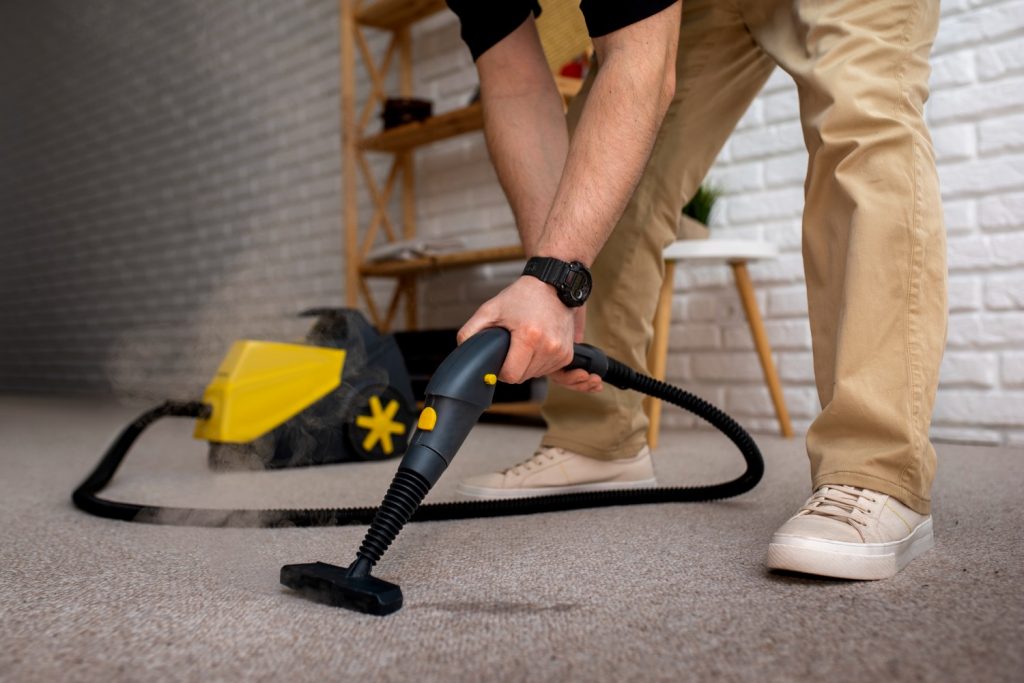
Understanding how cleaning vs. sanitising in restaurants works is crucial, as the cleaning standards for the food industry and health department are very high! Cleaning removes the dust, debris, and dirt that can be seen, while sanitisation reduces the bacteria and germs to a safer level. Sanitisation is essentially the next step after cleaning has been done.
Multiple places within the food industry are struggling to understand the difference between the two and when either of them is supposed to be done. Restaurants must clean surfaces before sanitisation to ensure proper disinfection of the place. Disinfectants and sanitisers are essentially the same in purpose; they just have different applications.
High-touch areas within a restaurant, like the kitchen and utility areas need a proper cleaning service to make sure there is no cross-contamination. Unkempt conditions of a food outlet are a health hazard.
To deal with such situations, professional cleaners in London should be hired. We welcome you to ID Cleaning’s website, here we specialise in restaurant cleaning services.
Cleaning vs. Sanitising: Guide for a Spotless Restaurant
In a restaurant, cleaning means removing the dust from the surfaces! It does not reduce the germs. Sanitisation, on the other hand, reduces pathogens to safer levels. Maintaining a clean work environment is necessary. This is why cleaning alone is not enough. In this blog, we shall explain to you how these two are different from one another.
The differences between the two are based on some key factors: purpose, methods, goals, and sequence.
Purpose
- Cleaning means the removal of dust, dirt, food particles, spilled fluids, etc., off the surfaces. It is the standard to expect your local diners and restaurants to be clean.
- Next, sanitisation means reducing the number of microorganisms to bring your surroundings to a safer level.
Method
- In cleaning, people usually use soap or detergent water along with a cleaning cloth to be done with the process. Most of the dust and debris is removed with the help of dusting tools like brushes and all.
- Sanitisation requires the use of chemicals or heat to kill the germs. The CDC requires that sanitisers kill 99.99% of infectious germs within 30 seconds.
When to Use?
- Cleaning the surfaces is the first step; after this, other steps come.
- Cleaning singlehandedly is not enough. Surfaces that may appear clean can still have germs on them. This is why ideally the next step is sanitisation.
- After sanitisation, disinfection is done to kill most of the pathogens. Lastly, sterilisation kills all the remaining pathogens.
- Sterilisation and disinfection are not food-safe.
Goals
- Cleanliness is the foremost tip for a hygienic environment in a restaurant. This helps to contain cross-contamination.
- Sanitation’s main purpose is to prevent foodborne illnesses and ensure food safety.
Also Read: Restaurant Cleaning Tips for a Clean and Healthy Environment
Need Your Restaurant Cleaned? Contact ID Cleaning
Here at ID Cleaning, we pride ourselves on our high-grade services for our clients and assure to provide the most excellent experience. ID Cleaning’s restaurant cleaning service is the very definition of professionalism and the best quality work that very few professional cleaners across London can match.
ID Cleaning has long been proud of its forte of deep cleaning kitchens and top-notch restaurants. As an acknowledged commercial cleaning supplier, we value hygiene and work to maintain hygiene expectations.
We use specialised equipment to maintain a standard of professionalism throughout our work and make sure every corner of your establishment has been deeply cleaned.
What are our tips for a hygienic environment in a restaurant? Well, no. 1: Call us now!
Conclusion
To maintain a clean and hygienic environment, it is important to understand where we can find the best restaurant cleaning services. The differences between cleaning and sanitisation are essential to be understood.
Cleaning removes the dirt visible to our eyes. Sanitation is important for in-depth cleanliness and the elimination of pathogens. By following the correct tips for a hygienic environment in a restaurant and implementing the right steps, food establishments can maintain the health standards.
For professional restaurant cleaning, visit our websites.
FAQs
- Why do we need to sanitise after cleaning?
- Cleaning is not enough alone; this is why sanitisation is required to ensure that the levels of microorganisms (bacteria and viruses) do not rise above a certain safe level. This is to prevent any foodborne disease.
- What are the consequences of not cleaning and sanitising properly?
- If a restaurant neglects it’s cleaning responsibilities, which are a health code violation. This can lead to cross-contamination and result in foodborne diseases in consumers.
- What are the UK’s regulations on cleaning?
- The FSA (Food Standards Agency) is the primary body responsible for regulating food hygiene standards in the UK. Authorised officers from environmental health departments carry out inspections in food premises to ensure that the public is protected and that high standards are maintained.
Disclaimer: The information provided in this content is just for educational purposes and is written by a professional writer. Consult us to know more about cleaning vs. sanitation.



